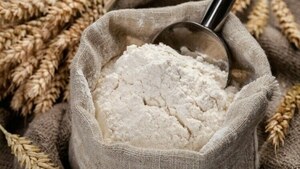Pakistan Edible Oil Industry has seen a tremendous growth in last two decades not only the import of Edible Oils and Oilseeds are increasing but the Industry is also embarking on the journey of value addition. The Ghee and Cooking Oil Plants have added value by putting up Oil Refineries and Solvent Extraction Plants. There has been enormous growth which has made Pakistan a very consistent market for the import of Edible Oil and Oilseeds.
The current Edible Oil scenario in Pakistan is: The import of Edible Oils per annum (Calendar Year) is currently 2.5 million tons and the import of Oilseeds is around 1.5 million tons per annum.
New trend is being created in Pakistan of importing Soybeans on Premium over CBOT basis. 2015 has been the first year that Pakistan have embarked very aggressively on the journey of importing Soybeans due to very weak Global prices and duty advantage over other Oilseeds. I must admit that Pakistan entrepreneurs have done a very innovative work by importing Soybeans only on premium over CBOT. This has given them a great flexibility of booking physical prices as and when required which is very much suitable in the bearish market.
While there is a potential of increasing the growth rate of Edible Oil consumption in Pakistan, we have to consider the enormous challenge of infrastructure at Port Karachi and Port Qasim.
Keeping in view the arrival of volume, it is imperative that facilities at Karachi Port should be improved and may at least come to the standard of Port Qasim dedicated Terminal. This challenge should be the priority of our leadership as infrastructure is the key to handle more volume and to reduce the cost of doing business.
Apart from above, our Association should also concentrate on the Research and Development (R&D) on local seeds as Pakistan dependency is enormous on the imported Oils and Oilseeds.
It is indeed an admitted fact that for our Government, priority is mostly on Cotton, Wheat, Rice and Sugar Cane but unfortunately there is hardly any effort to increase the local Oilseed production.
Our Association may introduce an innovative proposition for Public & Private Sector participation in the growth of local Oilseeds and to improve yield of the same. We may also encourage the Government statistical department to be more authentic in their figures and publish accurate numbers so that the Industry as well as the Government may have some clear direction.
I strongly believe that our Edible Oil Industry has a great potential to grow and with certain professional mechanism we could add more value to our Industry.
===============================================================
EDIBLE OIL SCENARIO
===============================================================
Per Capita Consumption 17kgs
===============================================================
Total Consumption Around 3.5 Million Tons
Local Production 0.5-0.6 Million Tons
Import of Edible Oils Around 2.5 Million Tons
Oil Extracted from Imported Seeds Around 0.5 Million Tons
Total Import Bill of Edible Oil about US$ 1.8 to 2.0 Billion
Total Import Bill of Oilseeds about US$ 0.5 to 0.6 Billion
===============================================================
Canola
Canola refers to both an edible oil (also known as canola oil) produced from the seed of any of several varieties of the rape plant, and to those plants, namely their cultivars. The three used are rapeseed (Brassica napus L.), field mustard/turnip rape (Brassica rapa subsp. oleifera, syn. B. campestris L.), and B. juncea. Consumption of the oil is common and, unlike rapeseed, does not cause harm in humans and livestock. It is also used as a source of biodiesel.
Canola was bred naturally from rapeseed in the early 1970s, and had a different nutritional profile, in addition to much less erucic acid. In the international community, canola is generally referred to as rapeseed 00 or double zero rapeseed to denote both low glucosinolates and low erucic acid.In addition to varieties from the traditional B. rapa and B. napus species, recent cross-breeding of multiple lines of B. juncea have enabled this mustard variety to be classified as a canola variety by lowering both erucic acid and glucosinolates to the market standards, achieving 'LEAR' status (for low erucic acid rapeseed). It may also be referred to as canola oil and, according to the Canola Council of Canada, is considered safe for human consumption.
Production and trade
-- As of the 2013/2014 season, production in the ten leading territories was
-- Country Production (1000 MT)
-- European Union 21,102
-- Canada 17,960
-- China 14,458
-- India 7,300
-- Australia 3,760
-- Ukraine 2,352
-- Russia 1,393
-- United States 1,004
-- Belarus 676
-- Pakistan 320
-- Kazakhstan 242
Canola oil
Canola oil is made at a processing facility by slightly heating and then crushing the seed. Almost all commercial canola oil is then refined using hexane. Finally, the Canola oil is refined using water precipitation and acid, "bleaching" with clay, and deodorising using steam distillation. About 43% of a seed is oil; the remainder is a rapeseed meal that is used as animal feed. About 23 kg (51 lb) of rapeseed makes 10 L (2.64 US gal) of canola oil. Canola oil is a key ingredient in many foods. Its reputation as a healthy oil has created high demand in markets around the world, and overall it is the third-most widely consumed vegetable oil.
The oil has many non-food uses and, like soybean oil, is often used interchangeably with non-renewable petroleum-based oils in products, including industrial lubricants,biofuels, candles, lipsticks, and newspaper inks depending on the price on the spot market. Canola oil is also recommended by the American Society for Reproductive Medicine for use as a vaginal lubrication.
The average density of canola oil is 0.92 g/ml.
Soybean
The soybean in the US, also called the soya bean in Europe (Glycine max) is a species of legume native to East Asia, widely grown for its edible bean which has numerous uses. The plant is classed as an oilseed rather than a pulse by the UN Food and Agriculture Organisation (FAO).
Fat-free (defatted) soybean meal is a significant and cheap source of protein for animal feeds and many meals; soy is another product of processing the soybean crop. For example, soybean products such as textured vegetable protein (TVP) are ingredients in many meat and dairy analogues. Soybeans produce significantly more protein per acre than most other uses of land.
Traditional nonfermented food uses of soybeans include soy milk, and from the latter tofu and tofu skin. Fermented foods include soy sauce, fermented bean paste, natto, and tempeh, among others. The oil is used in many industrial applications. The main producers of soy are the United States (36%), Brazil (36%), Argentina (18%), China (5%) and India (4%).The beans contain significant amounts of phytic acid, alpha-linolenic acid, and isoflavones.
Soybean meal
Soybean meal is used in food and animal feeds, principally as a protein supplement, but also as a source of metabolizable energy. Some, but not all, soybean meal is produced from the residue left after oil extraction. (Removal of the oil, which is used mostly in food, but also for industrial oils, soaps and biodiesel, involves crushing and either pressing or solvent extraction.) Some, but not all, soybean meal contains ground soybean hulls. Soybean meal is heat-treated during production, to denature the trypsin inhibitors of soybeans, which would otherwise interfere with protein digestion.
Sunflower
The sunflower (Helianthus annuus) is an annual plant in the family Asteraceae, with a large flower head (capitulum). The stem of the flower can grow up to 3 metres tall, with a flower head that can be 30 cm wide. Other types of sunflowers include the California Royal Sunflower, which has a burgundy (red + purple) flower head.
As food
Sunflower "whole seed" (fruit) are sold as a snack food, after roasting in ovens, with or without salt added. Sunflowers can be processed into a peanut butter alternative, Sunbutter. In Germany, it is mixed together with rye flour to make Sonnenblumenkernbrot (literally: sunflower whole seed bread), which is quite popular in German-speaking Europe. It is also sold as food for birds and can be used directly in cooking and salads. Sunflower oil, extracted from the seeds, is used for cooking, as a carrier oil and to produce margarine and biodiesel, as it is cheaper than olive oil. A range of sunflower varieties exist with differing fatty acid compositions; some 'high oleic' types contain a higher level of healthy monounsaturated fats in their oil than Olive oil.
(The writer is Chairman, Pakistan Edible Oil Refiners Association (PEORA) Chief Executive Officer, Westbury Group, Pakistan)





















Comments
Comments are closed.